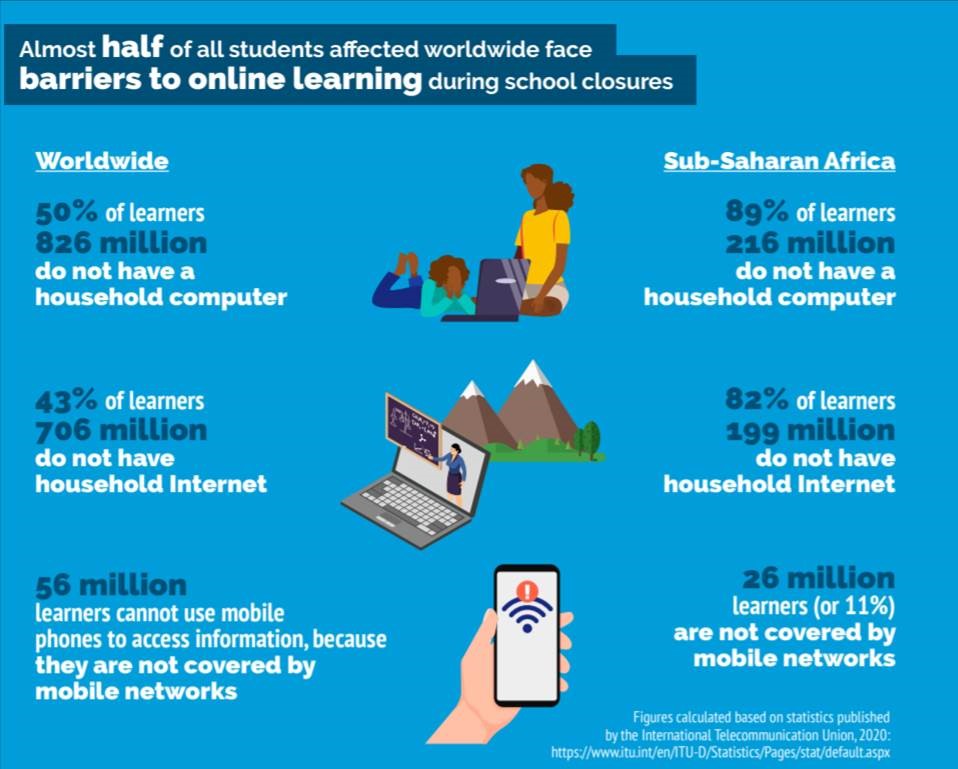The value of teachers was thrown into the spotlight this year. From the United Kingdom to Mexico, teachers have responded to 2020’s COVID-19 crisis by (often quite literally) going the extra mile. However, though the pandemic has shown us teachers’ strengths, it has also exposed weaknesses in the education systems that support them. This is why we’re taking stock of all the lessons of 2020 and using them as the foundation of the 6 key points in the "Call for Action" that will help us better support teachers in 2021.
1. Preserve employment and wages
COVID-19 shutdowns and restrictions have led to real economic hardship. In education, this has particularly wounded teachers on temporary contracts, who can’t rely on a guaranteed income. The temptation for governments is to save by cutting teachers’ salaries. This is the last thing they should do. As we investigated earlier this year, good salaries help attract the very best recruits, keep experienced teachers in the profession, and encourage societies to see the true worth of teaching. Some countries recognise this and have already taken action: in October, Nigeria’s President Buhari acted to ‘revitalise and reposition’ the teaching profession with a surprise salary increase.
It’s time to pay teachers what they deserve. Here’s how a salary increase can improve education for everyone involved.#LearningNeverStops #SupportTeachers @IIEP_UNESCO @OECDEduSkills https://t.co/Bd96L7WoKf pic.twitter.com/bCmZnN5X5N
— Teacher Task Force (@TeachersFor2030) November 6, 2020
2. Prioritise teachers’ and learners’ health, safety and well-being
The move to remote learning hasn’t shielded all teachers from harm. Many are still travelling to meet students without internet access and those who find it difficult to learn without close support. These changes can come at a cost to their mental and physical health. Some countries are providing teachers with psycho-social support during this crisis, for instance in Côte d’Ivoire, where the Education Ministry is helping to prepare teachers for their return to classrooms.
There are several simple things education authorities can do to lessen the pressure on teachers: streamline the admin they have to complete; allow more flexibility in student assessment; create peer support groups. But above all, they must simply begin by recognising the extreme stress their teachers are under. Watch this video to learn more:
Teachers have a right to decent working conditions which is why we need to #SupportTeachers and their mental health. https://t.co/0FakkpyTU1 pic.twitter.com/REMh9oUE3N
— Teacher Task Force (@TeachersFor2030) November 4, 2020
Tragically, COVID-19 isn’t the only threat teachers have faced this year. TFF has covered the violence faced by many teachers, schools and pupils; from Paris to Kabul, many teachers live and work under the constant threat of attack.The recent kidnapping of 300 Nigerian schoolboys by Boko Haram demonstrates the persistence of this threat, and it shows no signs of abating.
So although the prospect of a COVID-19 vaccine promises to protect teachers from the enemy we can’t see, more must be done to protect them from the enemy we can.
3. Include teachers in developing COVID-19 education responses
As they’ve shown repeatedly this year, teachers know their schools and students better than anyone. They have shown leadership and deserve to have their voices heard. That’s why we joined with partners to support social dialogue between governments and teacher unions in a selection of African Countries – one of many discussions we held around the world to mark World Teachers’ Day. Together, we committed to a set of principles that would ensure that future education planning is collaborative, consensual, and geared towards the equitable provision of quality education.
4. Provide adequate professional support and training
Barbados has been training teachers in the ICT skills they need to create engaging online lessons. To inspire other countries to support their teachers in adapting to the new COVID-19 reality, we created this back-to-school toolkit for school leaders and this guide for policy-makers to ensure that teachers are supported as schools reopen safely.
These documents, and other useful materials, can now be found in our Knowledge Hub.
Teacher development should be at the heart of efforts to meet @UN SDG 4 ‘quality education’.
— Teacher Task Force (@TeachersFor2030) October 5, 2020
That’s why we’ve built the TTF Knowledge Platform. https://t.co/FN0oq9NxAq pic.twitter.com/F16SbwfVb5
It’s not just the challenges of COVID-19 that teachers need support and training to overcome. There is also a need for general training on issues like inclusivity. Take a look at this video for more information:
Every child has the right to quality education and every teacher has the right to quality training ? That's why we’ve joined with @GEMReport to call for inclusion to be at the heart of teacher development.#SupportTeachers #AllmeansAll https://t.co/1ZjvlqX76A pic.twitter.com/8hmFe60Nvs
— Teacher Task Force (@TeachersFor2030) December 9, 2020
5. Put equity at the heart of education responses
The COVID-19 pandemic has highlighted the worst inequalities in our social systems, injustices that were here before COVID-19. On top of the various aforementioned investments, there are two ways in which we can move towards equity in education right now: focusing on reducing the digital divide and providing more support and encouragement to female teachers.

The efforts of countries like China are encouraging. The nation has worked to ensure that children in rural areas have adequate internet access while studying remotely, so that they don’t fall behind peers from urban areas. We look forward to other countries leading similar initiatives in 2021.
6. Include teachers in aid responses
In many of the world’s poorer countries, funding is urgently needed to ensure that there are enough resources available (digital or otherwise) for teachers to keep themselves and their students learning. Over the next few years, the students who will ultimately benefit from this aid will be the backbone of their nations’ economic and social recoveries. Put simply, this would be money well spent.
Next year, the Teacher Task Force will be calling on all partners to invest in teachers.
*
Photo credit: Phil Roeder/Flickr